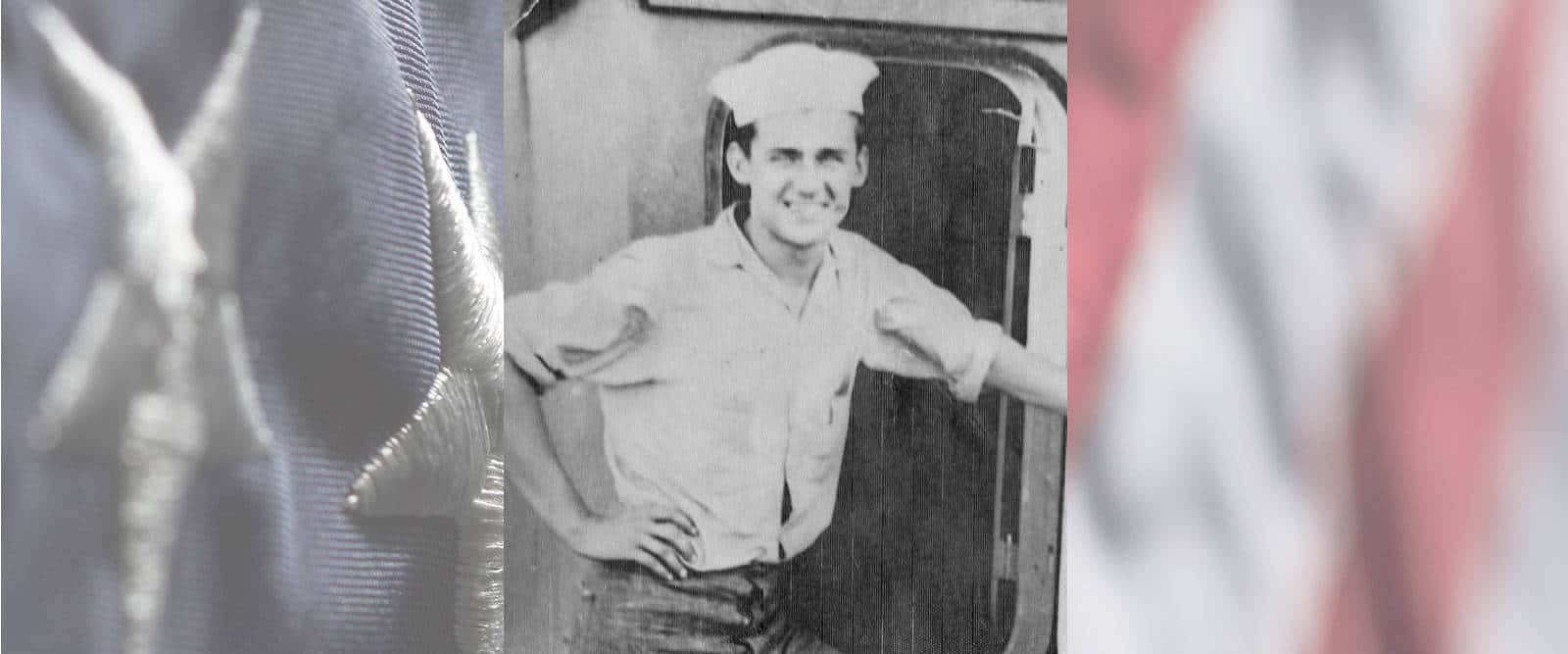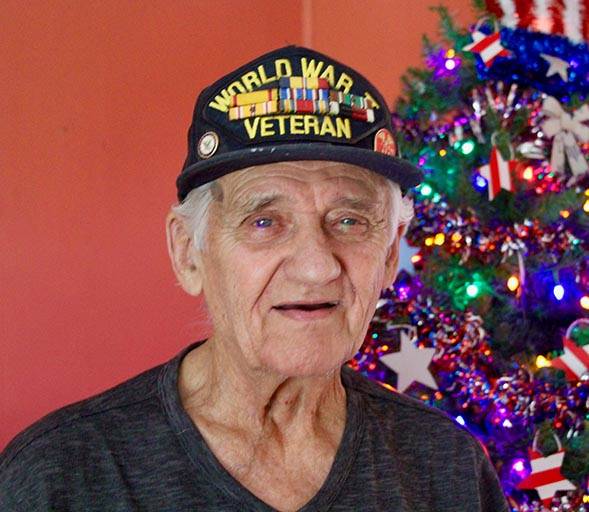U.S. Navy World War II Worth, IL Flight date: 08/09/17
By David Adams, Honor Flight Chicago Veteran Interviews Volunteer
Little did James (Jim) Vancura, Jr. know when he joined the Navy that he would land on Utah Beach, participate in the invasion of Southern France and Okinawa, as well as be part of the occupation force in Korea at war’s end. Jim grew up on Chicago’s west side and attended Crane Tech High School. His dad served in World War I in the field artillery and participated in most of the battles in France including Chateau-Thierry and Belleau Wood. In June 1943, as soon as Jim turned 17, he and his father visited the Navy recruiting office where he enlisted with his father’s permission.
Jim received basic training at Great Lakes, followed by radio and radar operator training at Alabama Polytechnic in Auburn, Alabama. On duty and in practice he received Morse code in 4-character blocks which he then deciphered. Seldom did he send or receive messages in the clear. Jim finished the 18-week course at the top of his class and hoped for the submarine service. He says he wanted to “get into the action.” But the alphabet intervened and by the time the Navy got to the “V”s he was left with the amphibious service. He remarks that “he jumped from the frying pan into the fire” which was apparent soon enough. Navy amphibious boat training was conducted at Solomons, Maryland. Once qualified in LST and LCT craft, he shipped out of Norfolk, Virginia in a large flotilla for the European theater.
Most of Jim’s service was on LST-920, a large ship, and LCT-1145, a smaller craft carried on the decks on an LCT. Landing Ship, tank (LST) is the naval designation for ships built to support amphibious operations by carrying tanks, vehicles, cargo, and landing troops directly onto shore with no docks or piers. This provided amphibious assaults to almost any beach. The Landing Craft, tank (LCT) was an amphibious assault craft for landing tanks on beachheads. Being in the forefront of assault landings, LCTs sustained the heaviest losses of any large landing craft besides the smaller, famous Higgins boat, or Landing Craft, Vehicle, Personnel (LCVP).
Jim found himself on an LCT at Utah beach sometime after D-day where troops and tanks and other supplies were still being offloaded for the push into France. Shortly thereafter his ship, among others, sailed into the Mediterranean through the Straits of Gibraltar in preparation for the invasion of Southern France. His unit spent some time in Naples before being ordered to join the invasion fleet. The invasion, code-named “Operation Dragoon”, was successful in keeping the German forces from joining the fight in Normandy after the Overlord invasion of June 6. D-day was set for the early morning of August 15, 1944. Jim was in one of the first LCTs to land on the beach. He remembers the naval gunfire streaking overhead as his craft, LCT-1145, came on shore. He had portable radios with which he communicated with the force commanders. He had all the battle plans; he manned his radios, 4 hours on, 4 hours off. It was quite a grind but vitally important for the success of the operation. Jim stayed on the beach for quite some time then returned to his ship. Eventually his unit was stationed in Marseilles awaiting further orders. He remembers his LCT transporting German prisoners from the shore to Navy ships for internment, their confiding to him in English that “we are so glad you are not the Russians.”
Jim’s ship returned to the States briefly before he joined another flotilla headed to the Pacific theater. The flotilla stopped in Guam and then headed for Okinawa where he participated in another invasion. The Okinawa campaign was the largest amphibious landing in the Pacific theater and lasted 82 days from Easter 1945 to June 22, 1945. Securing the island insured the Allies having air bases vital to the projected invasion of Japan. Jim’s LCT-1145 took numerous trips to the beach during the invasion. Some of his memories of the battle are just too raw to be shared. Jim does remember manning the LST’s 20-millimeter anti-aircraft gun and firing on Japanese kamikaze airplanes headed for the invasion fleet. He believes he took one down, but can’t be sure since so many guns were protecting the ships. From Okinawa, he joined the task force headed to Japan for the invasion. Jim remembers being the first on his ship to learn of the end of the war on August 15, 1945 since he was on duty when the radio message came through. With the war over the task force split up, the larger group to Japan for occupation duty and his smaller group to Korea for the same. He spent considerable time at the port of Incheon and in Seoul before he was released to return to the States. Jim remembers having enough points to return, but with no dependents he had to wait or find his own way home—hitchhike. The second troop transport he contacted jumped at having him onboard as its radio operator, so his hitchhiking effort was a great success.
Jim mustered out at Great Lakes on April 13, 1946. He was going to take the streetcar home, but a taxi was recommended and so he arrived home in style. Once back home in Chicago he applied for a ham radio license. Jim had to take a test. After just a few minutes, the test proctor said, “Stop!” He thought he did something wrong. Jim, when asked if he had been a Navy radio operator, said “yes”. He was awarded his license immediately without any further ado. Jim remains a ham radio operator to this day and reports that he has friends all over the world.
Jim opened and owned a television sales and service store in Oak Lawn right after leaving the service. He met his wife Marie at the other television store located on the opposite side of Oak Lawn. After they started dating, her boss fired her. So, Jim hired her for his own store and married her shortly thereafter in 1953. Jim and Marie celebrated 64 years of marriage this year, raised 9 children and have 13 grandchildren.
Jim’s decorations include the European-African-Middle Eastern Campaign Medal with battle star and the Asiatic-Pacific Campaign Medal with battle star.
We commend you, Jim, for your extraordinary service to our country and recognize you as one of the greatest generation. Enjoy your well-deserved recognition throughout your Honor Flight day!




